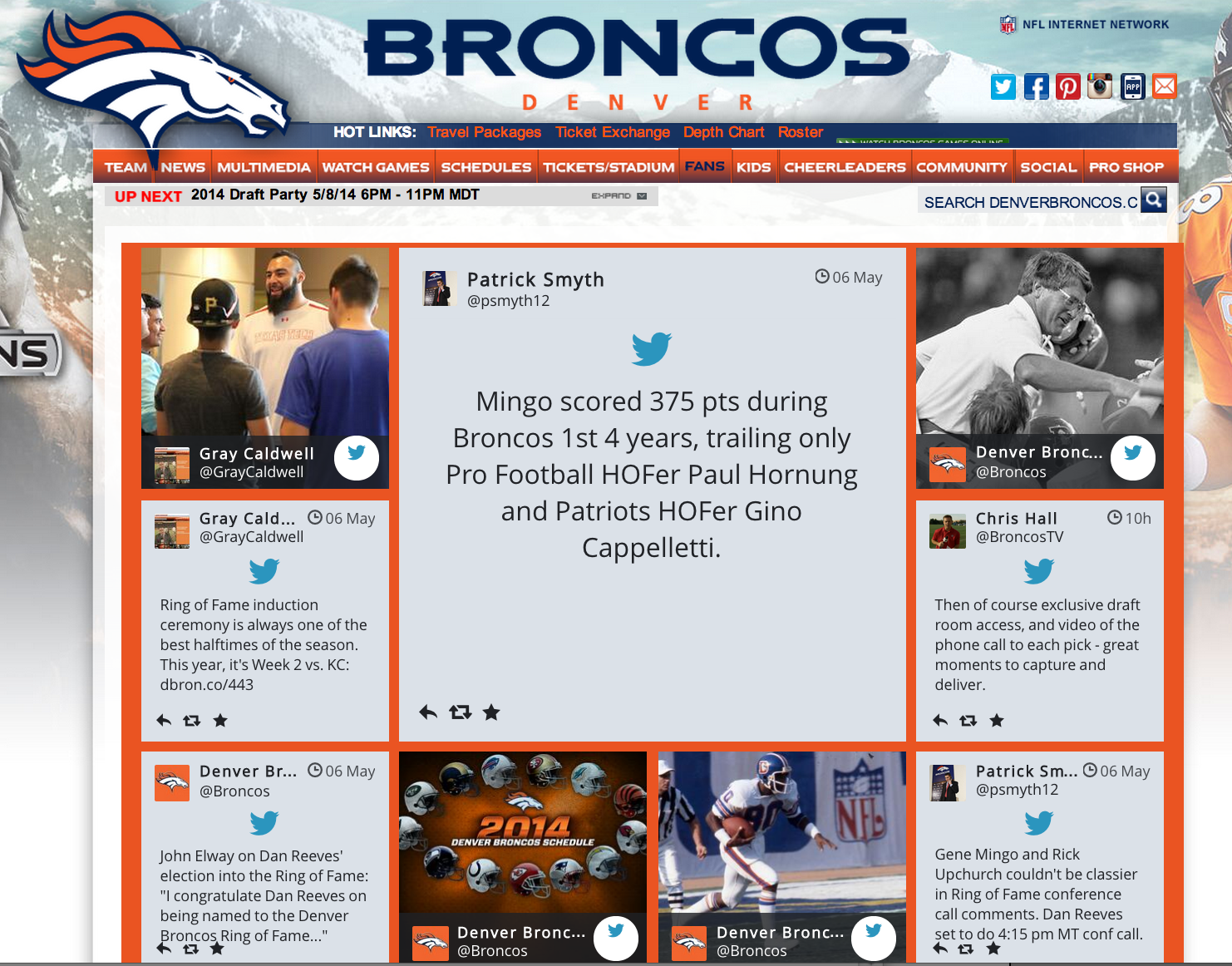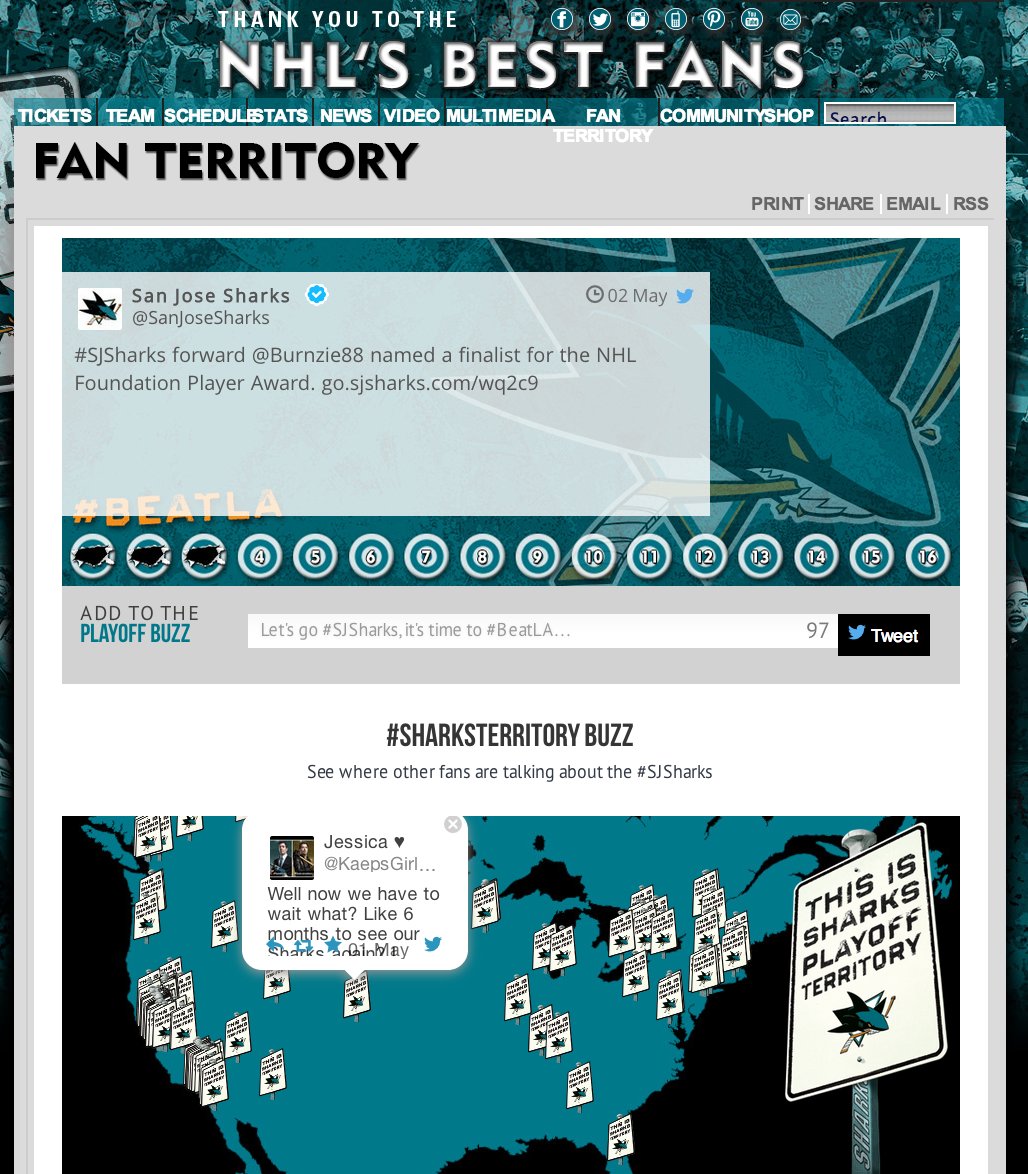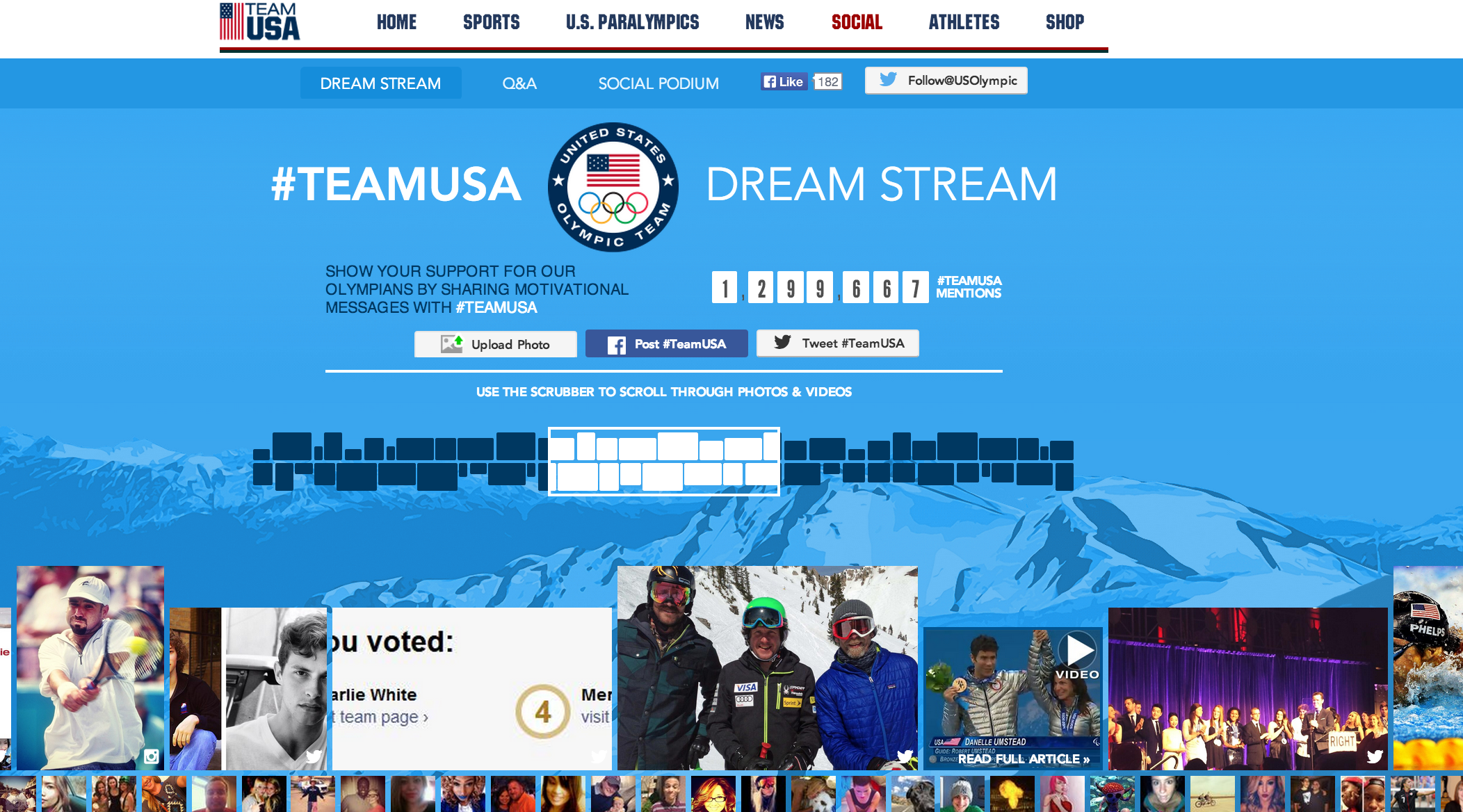I’ve never been one to embrace social hubs with open arms (and by hubs I don’t mean a social media directory, but a place on your site where you expect people to interact and consume content). When you work so hard to build a community online, I’ve never really understood why you would want to pull people away from it. To me, hubs have always seemed to negate what our industry is really about… being social.
Every time I see someone tweet that a new hub is off and running, I ask the same questions over and over again- do they add value, what’s the goal, what makes the hub so special? Too often in social media we equate launching something as a success. We celebrate a team when they get on a new platform or we celebrate a brand that launches a social hub without really digging much deeper into the why.
Take a look at the hubs out there and ask yourself… do they add value to the fan or consumer? I would believe, for the most part, the answer is “no”. Here’s why:
- In social media, you go where your audience is.
I’m a big believer that it takes something special to pull consumers / fans away from the platforms. If you don’t believe me, then digest this stat: The average click-through rate (CTR) for a link shared on Twitter is about 1.6 percent. Unless fans are browsing your site and navigating their own way to your social hub, the odds of them actually seeing enough value to click through is pretty low.
- The content is redundant.
Most of the hubs I’ve seen just regurgitate the social content out there. Very rarely do I see a social media hub that wows me with content that is different than what is on Facebook and Twitter. We need to stop bombarding our fans with the same content over and over again or eventually they are going to tune us out.
- Does the average fan care?
I have to admit, I get pretty excited when I see interactive elements on social hubs that track stats like hashtags, mentions, etc. in a unique display. But, I’m a social media geek… that’s my thing. Does the average fan care about the number of times a hashtag was used? Probably not. As with anything, when we create a social media hub we need to ask ourselves if this really appeals to our fans / consumer. We need to stop creating just so we can say we’ve created.
If not a social media hub, then what?
The other day I stumbled upon the Indian Premier League’s (IPL) digital presence and noticed they had some decent social integration on their site that includes Player Battles and Tweet the Play.
Though the campaigns from IPL could be more robust, they are a step in the right direction. Campaigns like this, that merge social and digital, is what teams and leagues need to focus on because they get people to engage, generate conversation and stir up excitement. THIS is how digital compliments social… not just a hub that repeats the same content.
What’s your take on social media hubs? How can we make sure they add value? I would love to hear your thoughts below.
0



We developed a “hub” of sorts this year at our university that we plan on using during specific larger events on campus. We went in this direction because we know a large portion of our audience isn’t on every platform we’re on and they are missing out on some of the great content that our community shares. This gives people a chance to see everything in one place rather than going between platforms. Plus, our user-generated posts all together in one space tells the story about an event or experience far better than we could through our own posts and retweets. But we’re a university, so it’s a little different than the examples above.
Thanks for sharing your experience, Meg! You make a good point about your community missing out on some great content and providing them with a platform to still experience it.
We created a seperate hub during post-season play for men’s basketball. The idea came from our university communications department and the purpose was to provide a one stop shop for fans during the post-season. It also provided us an opportunity to track what our fans were saying about us via a specific hashtag.
Initially, it gained traction but momentum fizzled quickly. Here is the link: http://murraystate.net/racertradition/
Appreciate you sharing, Morris. Two questions… Even though it fizzled quickly, do you think there was enough value where you would do one again? Second, do you think it brought “new” attention to your social media platforms from people who were not following before.
A question we’ve all asked for a while, Jessica! My two cents – the desire, to some degree, comes down to SM managers thinking it’s so great and cool how we get to see everything fans are saying and sharing and wanted a curated way to share/showcase this with fans.
The issues, some of which you bring up, is the redundancy offers little value for fans (especially enough to keep the hub sticky) and there is no value-add. They’re also not interactive and community-focused, mostly because hash tags aren’t utilized properly (or, at least, effectively in this case).
Curation of content serves more value for the SM manager — let all that stuff you’re seeing guide your content and conversation and posts. If fans are discussing a player, ask a question or do a poll; if you see fans taking interest in a stat[s], consider an infographic or add to the convo with another stat; share a fan photo or two; quote a fan, etc.
At best, probably 1-5% of fans following will actually take the time to track a hash tag; maybe a handful more would follow a hub. That’s your job — help bring the community together.
Thanks for the article, I really appreciate your thoughts!
To offer a bit of a counter opinion, I can speak from more than 2 years of experience working in this area every day. Our company has deployed hundreds of social media hubs for brands and teams. This includes over 100 NCAA schools, and countless pro teams from every major professional sports league. The feedback we get from them is very clear and consistent. By bringing in the conversation to their own domain, they are seeing increased engagement and significantly higher time on site (usually by a factor of 3 or 4x). It is a great way to keep people engaged, and enforces a much stronger sense of community then sending people off in a bunch of different directions to all the separate Silo’d social media channels. It also give the fans a clear call to action, and an invitation for their voice to be heard.
One key item to note is that keeping the design simple and clean is key. The over-designed, over-built hubs that we commonly see (and replace) are too confusing, and fans just can’t relate. If used, hubs should be hyper focused on FGC (Fan Generated Content). Allowing for an easier way for fans to engage with each other’s content, follow each other and create dynamic conversations is why this works so well at building community. When a fan is on an official website (like this one: http://www.gostanford.com/ViewArticle.dbml?SPSID=771311&SPID=131009&DB_LANG=C&DB_OEM_ID=30600&ATCLID=208528262&DB_OEM_ID=30600&DB_LANG=C&IN_SUBSCRIBER_CONTENT= ) then they are in a trusted environment, and more willing to join the conversation. Another bonus, is that it allows the team to fix the Signal to Noise issue that exists on social networks. They can curate the best content to help drive a very positive and engaging conversation.
Our experience shows that “Social Hubs” do add significant value, but only if they are focused on FGC, and not internally or team focused. (ie. “Hey look at all these charts the show how awesome we are!”)
At the end of the day, it is all about building a stronger community. If that isn’t the focus, then it won’t likely succeed.
Sincerely,
Josh Decker
Tagboard #CEO